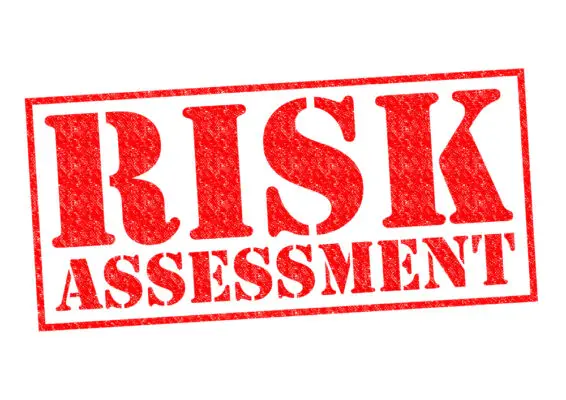Computer system validation (CSV) is a critical process in the pharmaceutical and healthcare industries to ensure that computer systems used for data management and processing comply with regulatory requirements.
Risk assessment is vital in this process, helping organizations identify potential risks associated with computer systems and develop appropriate mitigation strategies.
This article aims to provide an example of a risk assessment for computer system validation following a risk-based approach. By adopting such an approach, organizations can prioritize their validation activities based on the level of risk posed by each system.
Various types of validation activities, including installation qualification, operational qualification, and performance qualification, will be discussed in detail to demonstrate how these activities contribute to the overall risk assessment process.
Through this article, readers will gain insights into the importance of risk assessment in computer system validation and understand how it can help ensure compliance with regulatory standards.

Background
Computer System Validation Risk Assessment refers to evaluating and analyzing potential risks associated with computer system validation.
It involves identifying and assessing risks that could impact the quality, integrity, and reliability of a computer system used in regulated industries such as pharmaceuticals or medical devices.
In the life science industry, delivering quality products that meet acceptable levels and comply with applicable regulations, such as those set by the Food and Drug Administration (FDA), is paramount.
This requires a rigorous Quality Management process and a robust Quality Assurance system, which ensures that finished products meet the design intent and stringent regulatory standards.
A fundamental part of this process is the Laboratory Information Management System (LIMS). This system streamlines the tracking of data and eliminates the need for paper records, reducing the chance of errors and increasing the overall efficiency of the quality process.
However, its effectiveness is greatly reliant on the Computer System Validation (CSV) process, which ensures that the system operates as intended and can directly impact the quality of products.
A Life Science Consultant typically manages the CSV process within the life science industry. This professional guides the organization in implementing a life cycle approach to system validation, from initial requirements gathering to system retirement.
This approach ensures that each process step is well-documented, and any absent documentation is immediately addressed to guarantee compliance with regulatory standards.
Verification is another crucial piece of the quality assurance puzzle. Specifically, Quality for verification, including verification of label attributes, helps ensure that all products are correctly marked and traceable, meeting the high standards expected in the life science industry.
Equally important are the Infrastructure components used in the quality management process. This includes hardware components and output devices, which need to be in good working order to ensure smooth operations and maintain the flow of processes.
Furthermore, Virus management is critical to maintaining a safe and secure working environment in the life science sector.
Ensuring that systems are safe from viruses helps maintain data integrity and continues to support the production of quality products.
This assessment is crucial in ensuring that computer systems are validated effectively and comply with regulatory requirements.
Definition of Computer System Validation Risk Assessment
Conducting a comprehensive risk assessment is essential in defining the parameters of computer system validation.
As part of the overall validation process, risk-based validation aims to identify potential risks associated with computer systems and determine appropriate mitigation strategies.
The risk assessment involves evaluating factors such as regulatory requirements, compliance risks, electronic records, and software validations.
To ensure a systematic approach, organizations typically develop a Validation Master Plan (VMP) and a Validation Plan (VP).
The VMP outlines the overall validation strategy for the organization, while the VP provides specific details about how to validate individual computer systems.
These plans consider different aspects of risk management, including assessing risk levels associated with each system and implementing appropriate controls.
Organizations can prioritize their efforts and allocate resources effectively during a validation project by conducting a rigorous risk assessment.
This analytical approach helps ensure that computer systems comply with regulatory requirements and that potential risks are mitigated appropriately.
Regulatory Requirements
The US FDA regulations are a key consideration, as they ensure the safety and effectiveness of computer systems used in regulated industries.
In Europe, specific regulations, such as the EU Annex 11, outline electronic records and signature requirements.
Other countries also have their own regulations that must be considered when validating computer systems for use in regulated environments.
Adherence to these regulatory requirements is crucial for ensuring compliance and mitigating risks associated with computer system validation.
US FDA Regulations
The US FDA regulations governing computer system validation serve as a critical framework for ensuring the safety and efficacy of medical devices, creating a sense of reassurance among healthcare professionals and patients alike.
The validation process outlined by these regulations involves several key components:
- Standard Operating Procedures (SOPs): These are detailed instructions that provide step-by-step guidance on performing tasks related to computer system validation.
- Electronic Signatures: Electronic signatures ensure that all documentation related to the validation process is authentic and reliable.
- Regulatory Compliance: The US FDA regulations require companies to comply with specific guidelines and standards to ensure regulatory compliance during the computer system validation process.
- Degree of Assurance: Computer system validation aims to provide a high degree of assurance that the validated systems will consistently produce products of acceptable quality.
Healthcare organizations can maintain patient safety, product quality, and overall regulatory compliance by adhering to these regulations while utilizing computerized systems.

EU Regulations
EU regulations are crucial in ensuring medical devices’ safety, effectiveness, and quality, providing a robust framework for healthcare organizations to adhere to when implementing computerized systems.
These regulations outline the requirements for validating computer systems used in the medical field. To comply with these regulations, organizations must conduct a comprehensive validation effort that assesses the level of validation required based on the potential risks and impact on product quality.
This involves identifying business requirements, analyzing potential risks, and documenting all validation activities in a report. The approach to software validation may vary depending on the levels of risk associated with the system.
Adhering to applicable EU regulations, healthcare organizations can minimize potential risks and ensure that their computer systems meet the necessary standards for patient safety and product quality.
| Validation Activity | Level of Validation | Impact on Product Quality | Business Requirements | Potential Risks |
|---|---|---|---|---|
| Risk Assessment | High | Critical | Essential | Patient Safety |
| Test Case Execution | Medium | Moderate | Desirable | Data Integrity |
| Documentation | Low | Negligible | Optional | Regulatory |
| Training | Medium | Moderate | Essential | Compliance |
| Change Control | High | Critical | Essential | System Stability |
Other Countries’ Regulations
Other countries also have regulations to ensure the safety and quality of medical devices used in healthcare settings. These regulations typically employ risk-based approaches to evaluate and mitigate potential hazards associated with computer system validation.
Countries like Canada, Australia, and Japan require organizations to follow specific guidelines in the validation phases. For instance, laboratory information management systems must meet user requirement specifications and adhere to process controls.
Additionally, these regulations emphasize product safety by implementing software assurance practices and documenting all activities throughout the validation process. Risk categories are assessed, and corrective actions are taken as necessary.
Documentation practices play a crucial role in ensuring transparency and accountability.
Other countries’ regulations prioritize the effective implementation of computer system validation through comprehensive risk assessment methods and strict adherence to quality standards.
Risk-Based Approach to Computer System Validation Risk Assessment
The risk-based approach to computer system validation risk assessment involves three key points: identification, evaluation, and prioritization of risks and developing mitigation strategies for high-priority risks.
In the identification phase, potential risks associated with the computer system are identified by thoroughly analyzing its functionalities and components.
These risks are then evaluated based on their impact and likelihood, allowing for the prioritization of risks that pose the greatest threat to the system’s integrity.
Finally, mitigation strategies are developed to address the identified high-priority risks, ensuring appropriate measures are taken to minimize their potential impact.
Identification of Risks
Identifying risks in computer system validation involves analyzing potential hazards and vulnerabilities that could compromise the system’s integrity, reliability, or security.
This process typically occurs during the design phase and considers various factors such as:
- The operating environment.
- User requirements specifications.
- Risk management master plan.
- Validation strategy.
- Potential impact.
- Configuration management.
- GxP assessment.
- Potential failure mode.
- Applicable GxP regulations.
Systematically assessing these elements, organizations can identify potential risks that may arise throughout the lifecycle of a computer system.
This analytical approach enables stakeholders to proactively mitigate risks and implement appropriate controls to ensure compliance with regulatory requirements.
Furthermore, a comprehensive risk assessment facilitates effective decision-making during validation activities and enhances overall system performance and patient safety.
Evaluation and Prioritization of Risks
Assessing and prioritizing risks in computer system validation requires a comprehensive evaluation of potential hazards and vulnerabilities.
It is crucial to determine the significance of these risks to establish an effective hierarchy for risk mitigation.
In the validation context, various aspects must be considered, such as document management, business processes, batch records, handwritten signatures, and functional specifications.
Additionally, it is important to address specific industry requirements, particularly in regulated sectors like the medical device industry.
An action plan should be developed based on this evaluation and prioritization process.
This plan should include measures for continuous improvement and may involve implementing cloud-based systems or other technological solutions that enhance security and efficiency within the validation process.
Developing Mitigation Strategies for High-Priority Risks
To effectively manage and mitigate high-priority risks in the context of computer system validation, it is essential to develop comprehensive and targeted strategies tailored to address specific vulnerabilities and potential hazards.
One approach to validation involves assessing potential failures at each stage of the system’s life cycle, from the design stage to the operation phase.
It is important to involve key users in this process, as they can provide valuable insights into potential risks and help identify appropriate mitigation measures.
Additionally, conducting a thorough analysis of user requirements can help uncover any potential weaknesses or gaps in the system’s functionality that could lead to operational failures.
Mitigation strategies should ensure proper operation and minimize failures’ impact, such as implementing redundant systems or backup procedures.
The level of effort required for developing mitigation strategies will vary depending on the complexity and criticality of the system being validated.
| Risk | Mitigation Strategy |
|---|---|
| System | Implement redundancy measures |
| Failure | Design robust error handling |
| mechanisms | |
| Data Loss | Regularly backup data |
| User Errors | Provide comprehensive |
| training programs |
Developing effective mitigation strategies requires systematically analyzing potential risks and vulnerabilities throughout the computer system validation process.
Addressing these risks proactively through targeted measures, organizations can minimize operational disruptions and ensure the reliability and integrity of their validated systems.
Types of Validation Activities for CSV Risk Assessment
User Requirement Specifications (URS) Reviews are an essential validation activity in the risk assessment process of computer system validation.
These reviews involve thoroughly examining and evaluating the user requirements specified for a particular computer system.
The purpose is to ensure that the URS accurately captures all necessary functionalities, performance criteria, and regulatory compliance requirements.
This helps to identify potential risks associated with the system and inform subsequent validation activities.
User Requirement Specifications (URS) Reviews
During the User Requirement Specifications (URS) review process, it is important to thoroughly analyze the documented requirements to identify any potential risks or shortcomings.
This step plays a crucial role in ensuring that the computerized system being validated meets the needs and expectations of its users.
The URS review involves assessing various aspects such as user management, development of user requirements, assessment infrastructure, and assessment protocols.
Scrutinizing these elements, potential pitfalls can be identified and preventive actions can be taken. Additionally, the qualification of personnel involved in the validation process should be evaluated through qualification protocols.
It is essential to ensure that all necessary documentation is present during this review stage, including installation qualification protocols.
This systematic approach helps minimize risks and ensures compliance with regulatory guidelines for each computerized system category.
| Aspect | Importance |
|---|---|
| User Management | Crucial for effective system operation |
| Development of User Requirements | Ensures alignment with user needs |
| Assessment Infrastructure | Supports accurate evaluation |
| Assessment Protocols | Provides standardized evaluation process |
Table: Aspects considered during URS reviews
Frequently Asked Questions
What steps are involved in conducting a computer system validation risk assessment?
The steps in conducting a computer system validation risk assessment include identifying potential risks, assessing their impact and likelihood, and prioritizing them.
Developing mitigation strategies and documenting the entire process for future reference.
What are the key factors to consider when assessing the risk associated with a computer system validation process?
When assessing the risk associated with a computer system validation process, key factors include the system’s complexity, regulatory requirements, potential impact on patient safety and data integrity, and the qualifications of personnel involved in the validation process.
Can you provide examples of common risks that may be identified during a computer system validation risk assessment?
Common risks identified during a computer system validation risk assessment include data integrity issues, software bugs or errors, inadequate user training, security vulnerabilities, incomplete documentation, and regulatory non-compliance.
How often should a computer system validation risk assessment be performed?
A computer system validation risk assessment should be performed regularly to ensure the ongoing effectiveness of the validation process.
The frequency may vary depending on system complexity and regulatory requirements.
What are the potential consequences of not conducting a thorough risk assessment during the computer system validation process?
Not conducting a thorough risk assessment during the computer system validation process can lead to severe consequences such as regulatory non-compliance, data integrity issues, increased security breaches, and potential harm to patients or users.

Conclusion
Computer system validation is a crucial process in ensuring that computer systems used in regulated industries are compliant with regulatory requirements.
This article discussed the risk-based approach to conducting a computer system validation risk assessment. Organizations can prioritize their validation activities and allocate resources effectively by assessing the potential risks associated with using these systems.
Various types of validation activities were also mentioned, including installation qualification, operational qualification, and performance qualification.
A structured and comprehensive approach to computer system validation is essential for maintaining data integrity and compliance with regulatory guidelines.

Chris Ekai is a Risk Management expert with over 10 years of experience in the field. He has a Master’s(MSc) degree in Risk Management from University of Portsmouth and is a CPA and Finance professional. He currently works as a Content Manager at Risk Publishing, writing about Enterprise Risk Management, Business Continuity Management and Project Management.

